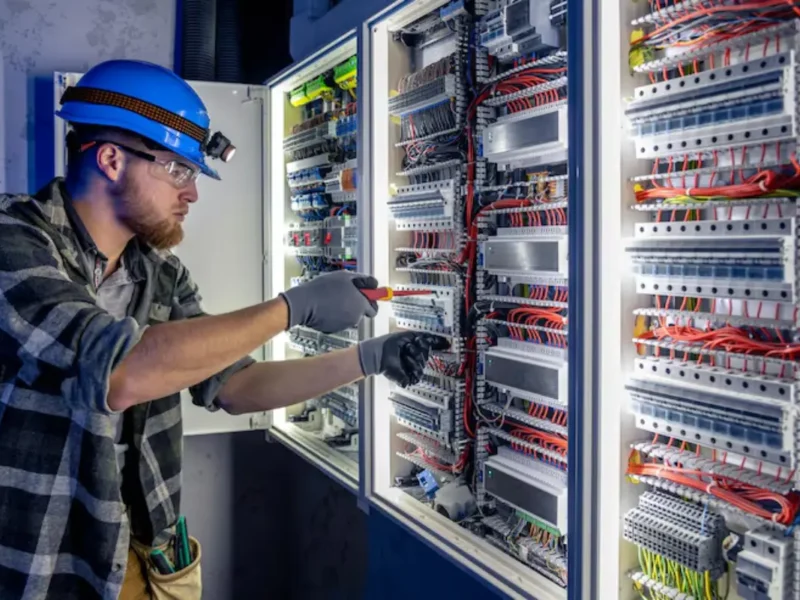The SIM card is your iPhone’s key to connecting with the world, despite its small size. It enables voice calls, texts, and internet browsing globally.
Seeing a ‘No SIM’ or ‘Invalid SIM’ message on your iPhone can turn your high-tech device into just an expensive paperweight. But don’t worry. Our detailed guide has everything you need to fix this annoying problem and get your iPhone back to its fully functional state.
Contents
What you need to know about SIM cards
Let’s start with a quick rundown of what a SIM card does. SIM stands for Subscriber Identity Module. It’s a tiny card that stores crucial info like your phone number, payment details, and your carrier’s identity.
This small but mighty tool links your phone to your carrier’s network, allowing you to make calls, text, and access mobile data. When there’s an issue with the SIM card being detected, that’s when you encounter the frustrating ‘No SIM’ or ‘Invalid SIM’ alerts.
Why does the ‘No SIM’ error occur?
SIM cards may be tiny, but they’re crucial. They can cause the ‘Invalid SIM’ message on your iPhone for several reasons, like if the SIM card or tray gets dislodged, a system error occurs, the SIM card is damaged, or a software update goes wrong. Often, apart from a dislodged or damaged SIM, pinpointing the exact cause of the ‘No SIM’ issue can be tricky.
Fixing invalid SIM
To tackle an invalid SIM card issue, start with the easiest solutions. Here’s your action plan:
- Verify the status with your carrier. First, ensure your network carrier subscription is active. If you haven’t used it in a while or have unpaid bills, your carrier might have deactivated your number. Check your status through the carrier’s app or contact their customer service.
- Turn Airplane mode on and off. Toggle your iPhone’s Airplane Mode to fix various network problems, including a faulty SIM card. Open the Control Center and turn Airplane Mode on and off.
- Restart your iPhone. Sometimes, a small software bug might cause your SIM card to not be recognized. Restarting your iPhone could be the simple fix you need.
- Take off your SIM card and put it back in. If your iPhone has been bumped or the SIM tray wasn’t put in correctly, the SIM card could be out of place or damaged. Power off your iPhone, take out the SIM card, check for any obvious damage, gently clean it with a soft cloth, and put it back in.
- Update your iOS. A software glitch might make your SIM card seem invalid. Check for any available iOS updates and install them if needed.
- Update your carrier settings. Carriers occasionally update their settings to improve network performance. Look for any available updates to carrier settings and install them when prompted.
- Tinker with your network settings. If the ‘invalid SIM card’ message keeps appearing, it might be due to a software issue in your phone’s network settings. Resetting these settings could solve the problem.
- Try with a different SIM card. If earlier solutions fail, the issue might lie with the SIM card. Try using a SIM card from a friend or get a new one from your carrier to test. If this fixes the error, your original SIM card likely needs to be replaced.
- Factory reset your iPhone. If nothing else works, a full factory reset could be the last resort. Make sure to back up your iPhone before proceeding with the reset.
Conclusion
If the SIM card issue remains unresolved after all attempts, it’s time to contact your carrier’s customer service, get in touch with Apple support, or visit a third-party iPhone repair store for professional assistance.
Sometimes, replacing your iPhone might be the best solution, especially if AppleCare covers it. Remember, all technology has its problems, but you can often solve them with the right troubleshooting or professional assistance. If your iPhone becomes unusable, think about trading it in for some extra cash.
The ‘No SIM’ or ‘Invalid SIM’ error is a frequent obstacle for iPhone users. However, with the right knowledge and some patience, you can successfully resolve this issue, ensuring your device remains fully operational for communication and connectivity.



